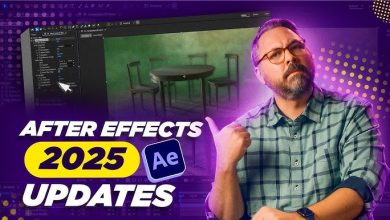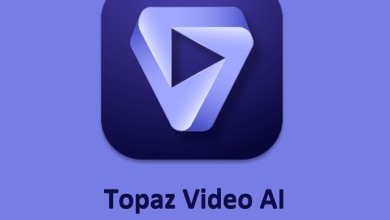Video editing software has seen much growth since its first form; the evolution was from basic methods with scissors and tape to modern-day sophisticated digital video platforms. Such an evolution not only made visual storytelling of a better quality but also democratized video production. For upcoming creators, especially those looking for the best video editors for YouTube beginners, this evolution has opened doors to tools that are both powerful and user-friendly. Let’s journey through the milestones that define the fascinating world of video editing.

The Beginnings: Scissors, Tape, and the Linear Method
Video editing derived from the era when doing it was extremely manual, drawn into pieces as a copyman then taped them all together. From those early years, this is the linear editing method where a certain sequence of images and sounds must be arranged. Changes are somewhat cumbersome and highly time-consuming.
The Moviola was finally invented in the 1920s and formed a benchmark. It was at this point that the innovation allowed editors to see their footage as they were creating their cut points, greatly increasing accuracy and dramatic flow. The Moviola dominated the film industry for many years, paving the way for advanced technological tools.
Magnetic Tape and the Emergence of the Video Tape Recorder
The 1950s saw the advent of the Video Tape Recorder, a revolutionary device for television production. The AMPEX Corporation invented the VTR, which used magnetic tape to record video, much more efficient and cost-effective than film.
One of the more significant innovations was transverse scan technology, which maximized the tape’s storage capacity but reduced recording speeds. Although it streamlined editing, the process remained linear, so that even smooth cuts required a lot of splicing and re-recording.
Electronic Editing: A Leap Towards Efficiency
The arrival of electronic editing in the 1960s further innovated. Electronic editors like EECO 900 and AMPEX, had timecodes, therefore eliminating the splicing process, which would be necessary in the more traditional form of editing. Timecodes allowed editors to pinpoint and extract segments of the footage more accurately.
This period saw the introduction of non-linear concepts of editing. Unlike linear processes, non-linear editing preserved footage while allowing a different timeline arrangement and manipulation for the editor to use. In fact, early digital systems such as the CMX 600 was cumbersome and expensive to operate, though it paved the way for further development in this digital editing sector.
Digital Editing: Revolutionising Creativity
The late 1980s and early 1990s were the times when digital editing came into play, which became a breakthrough to change the landscape of video production forever. Avid developed software suites that enabled people to edit accurately, non-linearly within a digital environment. It removed all the physical restraints of tape and film and offered the utmost flexibility to the creators.
The emergence of digital cameras led to easier video production. Nowadays, any amateur producer can make highly professional content through the tools available for free video editing software download. Not only did digital editing help enhance the video and audio’s quality, but it also accelerated the success of platforms such as YouTube, whose users make high-quality material by using easy software.
The Role of Video Editing Software for Beginners
As digital editing tools have developed, they also have become easier to use. They are more intuitive and helpful for beginners and professionals alike. For aspiring content creators, especially those entering the YouTube space, it is important to find the best video editors for YouTube beginners. These tools have often simplified interfaces, drag-and-drop functionality, and pre-built templates that minimize the learning curve.
Many of these services are free or low-cost, so quality video production is accessible to everyone. This democratization has led to an explosion of user-generated content across social media and streaming platforms.
The Future of Video Editing
This blog has given you a brief conception about the evolution of video editing. If you are looking for the best video editors for YouTube beginners, you have to focus on the future prospects for sure. The journey of video editing is far from over. Emerging technologies like artificial intelligence (AI) are already transforming the industry by automating basic tasks such as cutting, transitions, and even colour grading. AI-driven tools can analyze footage and make intelligent suggestions, further streamlining the editing process.
Virtual reality and augmented reality are going to change the face of how editors will relate to their projects. One can imagine working on footage in a fully immersive environment, manipulating scenes in three dimensions.
Collaboration will also be made easier through the integration of real-time tools that enable teams to work together from different locations. The boundary between professional and beginner editing tools will blur with time, meaning more opportunities for creators.

Discover Lightweight Video Editing Apps with Full Version Forever
Looking for efficient and user-friendly video editing tools? At Full Version Forever, you’ll find a curated selection of lightweight video editing apps for PC that deliver professional-grade results without slowing down your system. Whether you’re a YouTube beginner searching for intuitive software or an experienced editor aiming for efficiency, Full Version Forever has you covered. These apps offer robust features like seamless transitions, dynamic effects, and export options, all while being easy to install and use. Elevate your editing game without compromising performance—explore Full Version Forever for the best video editing solutions tailored to your needs.
End Note
It goes without saying that technological advancement and innovation have been an inevitable part of the evolution process in video editing software. While transitioning from the basic splicing methods to AI automation, each level brought new storytelling opportunities. If a beginner begins the journey, it makes a difference to have a list of best video editors for YouTube beginners – simple but perfectly functional.
As we look to the future, the tools of tomorrow will allow us to tell our stories better than ever before, pushing boundaries beyond what is considered possible for all of our skill levels. From seasoned pros to enthusiastic newcomers, the possibilities in video editing are endless—and they’re only just beginning.
Frequently Asked Questions About Video Editing Software
1. What do most YouTubers use to edit?
Most YouTubers use professional video editing software like Adobe Premiere Pro, Final Cut Pro, or user-friendly options like iMovie and DaVinci Resolve for creating content.
2. What is the best video editing program for beginners?
The best video editing software for beginners includes tools like Filmora, iMovie, and Canva Video Editor. These apps are easy to use and offer intuitive features.
3. What is the number 1 editing app for YouTube?
For YouTube creators, the top video editing software includes Adobe Premiere Pro, Final Cut Pro, and DaVinci Resolve. Beginners often prefer Filmora or iMovie.
4. What is the best video editing app that is free?
DaVinci Resolve and HitFilm Express are among the best free video editing software downloads, offering advanced features without cost.
5. Which is the best video editing software for a low-end PC?
Lightweight video editing apps for PC, like OpenShot and Shotcut, work efficiently on low-end systems while delivering essential features.
6. What is the best video editing software for PC for free?
The best free video editing software for PC includes DaVinci Resolve, Lightworks, and Shotcut, offering powerful tools for creating high-quality videos.



